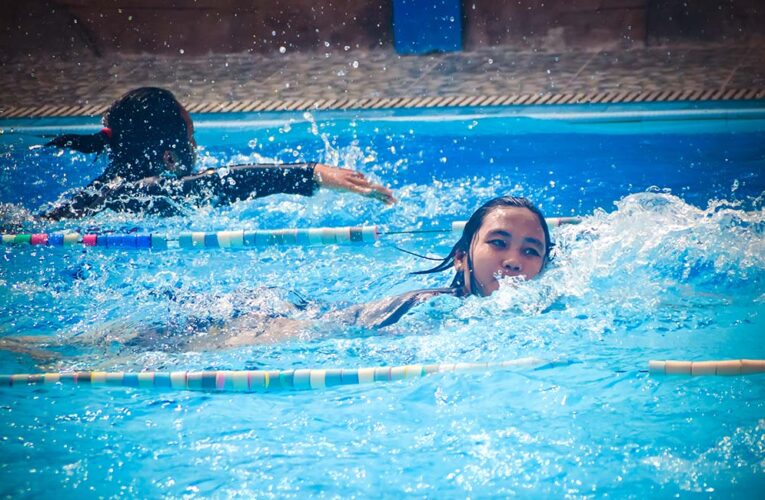The Art and Science of Swimming: A Dive into the Depths of Aquatic Mastery
Swimming, often regarded as both an art and a life-saving skill, is a universal activity that transcends cultures, ages, and abilities. From the serene strokes of Olympic champions to the joyful splashes of children in a community pool, swimming is a dynamic pursuit with physical, mental, and emotional benefits. In this comprehensive exploration, we dive into the depths of swimming, exploring its history, the science behind the strokes, its health advantages, and the sheer joy it brings to millions around the world.
A Historical Plunge:
The history of swimming can be traced back to ancient civilizations. The Greeks, Romans, and Egyptians recognized the value of aquatic skills, incorporating swimming into physical education and military training. Competitive swimming made its mark in the 19th century, with the National Swimming Society established in London in 1837. The first recorded indoor swimming pool, the St George’s Baths, opened in Liverpool in 1828, marking a pivotal moment in the popularization of swimming.
The Science of Strokes:
Swimming is not just about moving through water; it is a symphony of coordinated movements, perfected over time through the understanding of hydrodynamics and biomechanics. The four primary swimming strokes – freestyle, breaststroke, backstroke, and butterfly – each have distinct techniques, requiring a delicate balance of strength, flexibility, and precision.
Freestyle: Known for its fluidity, freestyle is characterized by the alternating arm movements and flutter kick. Efficient breathing, body rotation, and a streamlined position contribute to the stroke’s effectiveness.
Breaststroke: Recognized for its frog-like kick and simultaneous arm movements, breaststroke places emphasis on glide and breath control. The breaststroke kick involves a powerful whip-like motion, propelling swimmers forward.
Backstroke: Swimmers executing the backstroke float on their backs, employing an alternating arm and flutter kick. A crucial aspect is maintaining a straight body position and a consistent, rhythmic motion.
Butterfly: The butterfly stroke is perhaps the most challenging, demanding a symmetrical arm movement, a dolphin kick, and an undulating body motion. Timing and coordination are paramount for a smooth and powerful butterfly stroke.
Understanding the biomechanics of each stroke allows swimmers to maximize efficiency and minimize resistance, promoting speed and endurance in the water.
Health Benefits of Swimming:
The benefits of swimming extend far beyond its role as a recreational activity. From a cardiovascular standpoint, swimming enhances heart health, improving circulation and lowering the risk of heart disease. It is also a full-body workout that engages various muscle groups, promoting strength, flexibility, and endurance.
Swimming is often recommended for individuals with joint issues or injuries due to its low-impact nature. The buoyancy of water reduces stress on joints while providing resistance, making it an ideal exercise for rehabilitation and long-term joint health.
Additionally, swimming has been linked to mental well-being. The rhythmic nature of swimming, combined with the soothing properties of water, can alleviate stress and anxiety. The meditative quality of being submerged in water creates a calming environment, fostering mental clarity and relaxation.
Learning to Swim:
Given its importance as a life skill, learning to swim is a valuable endeavor for people of all ages. Swim lessons not only instill confidence in the water but also equip individuals with essential water safety skills. In many communities, swim programs cater to various age groups and skill levels, emphasizing the gradual progression from water acclimatization to mastering advanced strokes.
Competitive Swimming:
The world of competitive swimming showcases the pinnacle of aquatic athleticism. Olympic swimmers, adorned with medals and records, inspire aspiring athletes worldwide. The thrill of competitive swimming lies in the pursuit of personal bests, records, and the camaraderie built within the swimming community.
Swimming is more than a physical activity; it is a journey into the realms of physical fitness, mental resilience, and aquatic mastery. As individuals glide through the water, they embark on a holistic experience that nurtures the body, mind, and soul. From the ancient origins of swimming to the cutting-edge techniques of modern competitive swimmers, this timeless pursuit continues to make waves across cultures, offering a refreshing escape and a pathway to lifelong well-being. Whether one dips a toe or dives headfirst, the world of swimming beckons with the promise of discovery, growth, and the pure joy of moving through the aquatic expanse.



